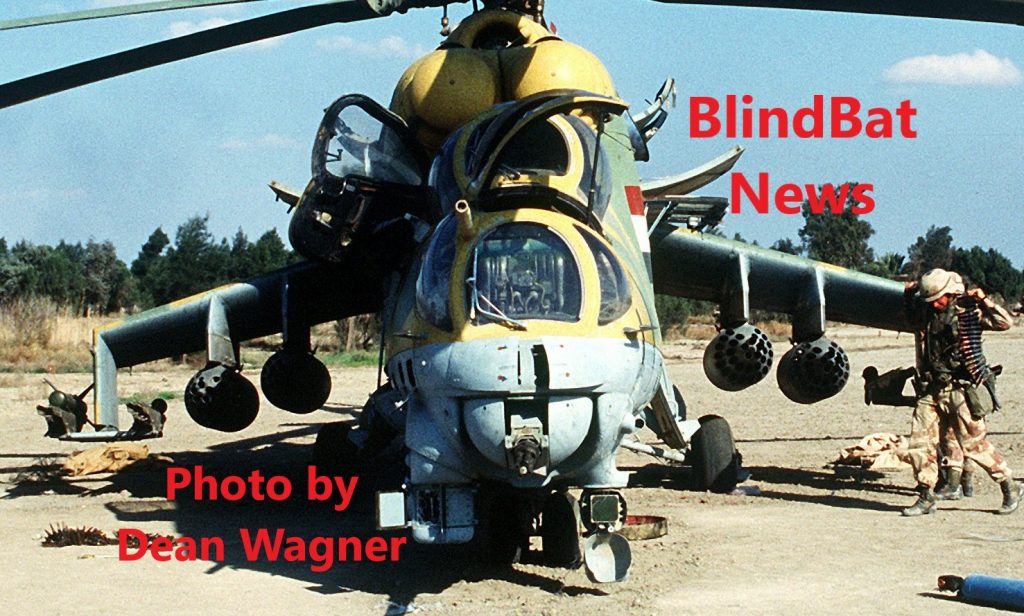In April 1984, the U.S. Air Force’s (USAF) Strategic Air Command (SAC) conducted the sixth NIGHT TRAIN/GLOBAL SHIELD exercise, which took place on several USAF bases around the world.
Click here to read a PDF of a once secret USAF document about Night Train ’84.

Members of the 2953rd Combat Logistics Support Squadron arrive on Davis Monthan Air Force Base (The Boneyard), Arizona, for Exercise NIGHT TRAIN/GLOBAL SHIELD, April 1984. U.S. Air Force photo by Technical Sergeant Rob Marshall.
On ‘The Boneyard’ (Davis-Monthan AFB, Arizona), Night Train ’84 tested the Airmen’s ability to quickly repair battle damaged B-52 bombers, which included the use of experimental manually operated tools and a ‘Battel Damage Infliction Gun’.

The battle damage infliction gun is offloaded. The gun was provided by the Foreign Munitions Test and Evaluation Group of the Air Force Wright Aeronautical Laboratories. USAF photo by Technical Sergeant Rob Marshall.

From left to right, 30mm fragmentation, 20mm high explosive, 20mm incendiary, and 20mm armor piercing. USAF photo by Technical Sergeant Rob Marshall.

The BDIG was aimed at various parts of the sacrificial B-52. USAF photo by Technical Sergeant Rob Marshall.

A blast shield consisting of a steel framed bunch of wood 4x4s was used to reduce the spread of shrapnel. USAF photo by Technical Sergeant Rob Marshall.

A 20mm high explosive round tears through the left wing tip of a mothballed B-52, April 1987. USAF photo by Technical Sergeant Rob Marshall.

The damage done to the left wing tip area, the entry wound is smaller than the exit wound on the top of the wing, a lot of internal damage. USAF photo by Technical Sergeant Rob Marshall.

Repair work was 24 hours, the exercise was simulating a combat situation, specifically a nuclear war with the Soviet Union. USAF photo by Technical Sergeant Rob Marshall.

Building a shipping crate for a B-52’s main landing gear door. USAF photo by Technical Sergeant Rob Marshall.

Since the exercise was about a running nuclear war with the Soviet Union, Airmen had to perform their jobs in full MOPP (Mission Oriented Protective Posture) gear for NBC (Nuclear Biological Chemical) warfare. USAF photo by Technical Sergeant Rob Marshall.

Having been there done that myself, I can tell you that working even for a short time in full MOPP is a…… frustrating to say the least. USAF photo by Technical Sergeant Rob Marshall.

An engine nacelle, damaged by the BDIG, had to be replaced. The Airman not wearing MOPP gear is an observer, grading the others on their performance. USAF photo by Technical Sergeant Rob Marshall.

Under cover of darkness, a sheet metal worker patches a large hole in the pylon holding the engine nacelle, made by the BDIG. USAF photo by Technical Sergeant Rob Marshall.

At the time, this was an experimental manually operated ‘blind fastener’ installation kit used to repair sheet metal. USAF photo by Technical Sergeant Rob Marshall.

Manually operated tools are gold during a nuclear war. Nuclear explosions create EMPs (electro magnetic pulses) which knock out any electronics, and electric power. USAF photo by Technical Sergeant Rob Marshall.
Cold War Battle Damage:  THE HIND-END OF DESERT STORM
THE HIND-END OF DESERT STORM
Pandemic Overflight:  BOMB THE VIRUS BACK TO THE STONEAGE!
BOMB THE VIRUS BACK TO THE STONEAGE!








